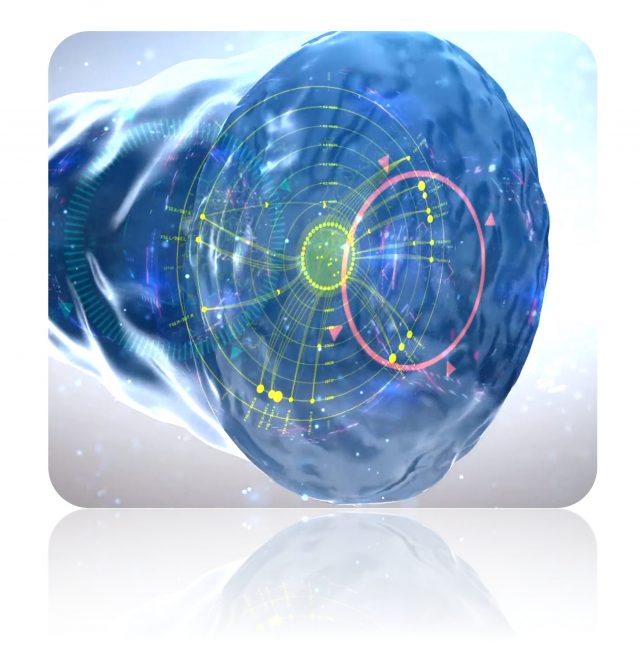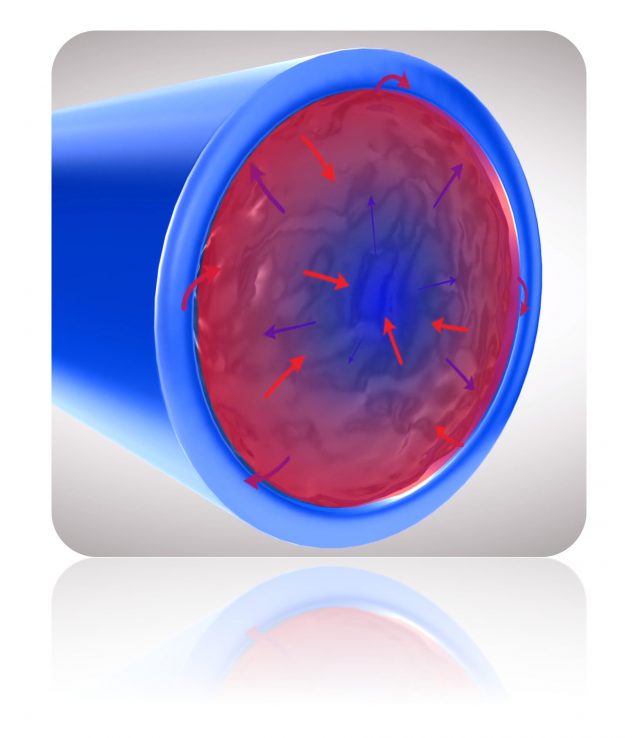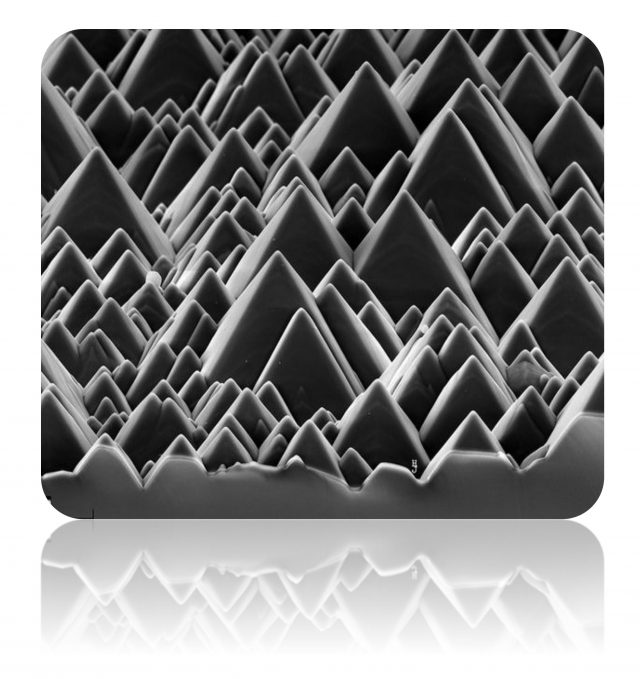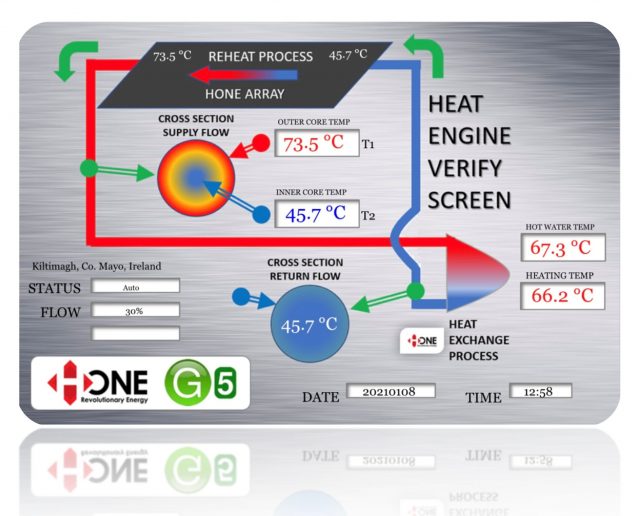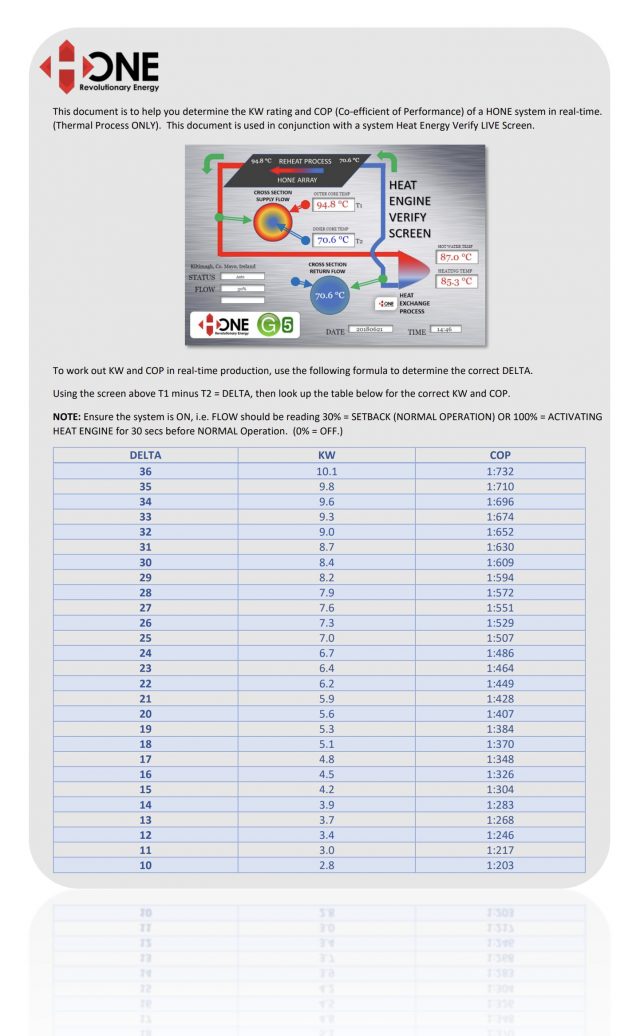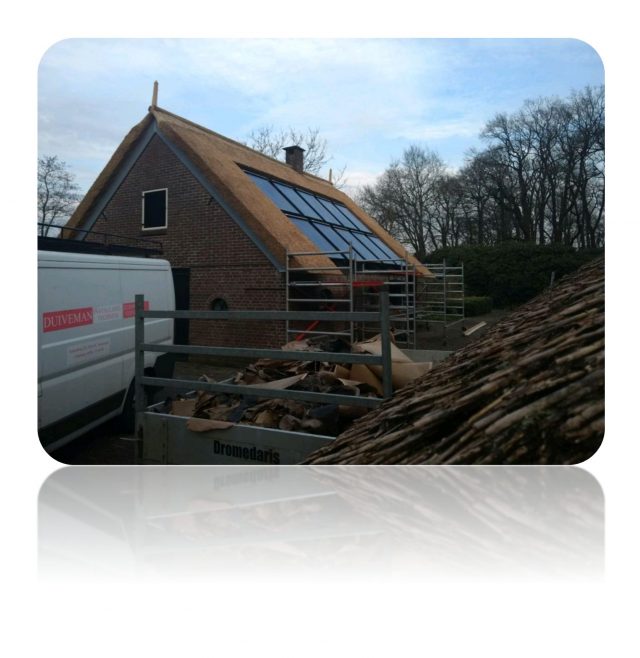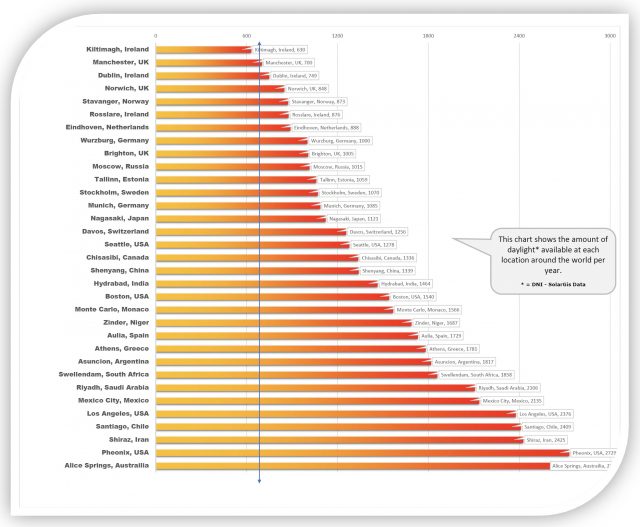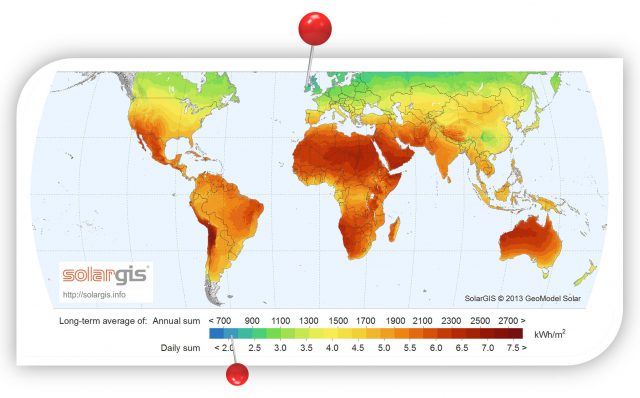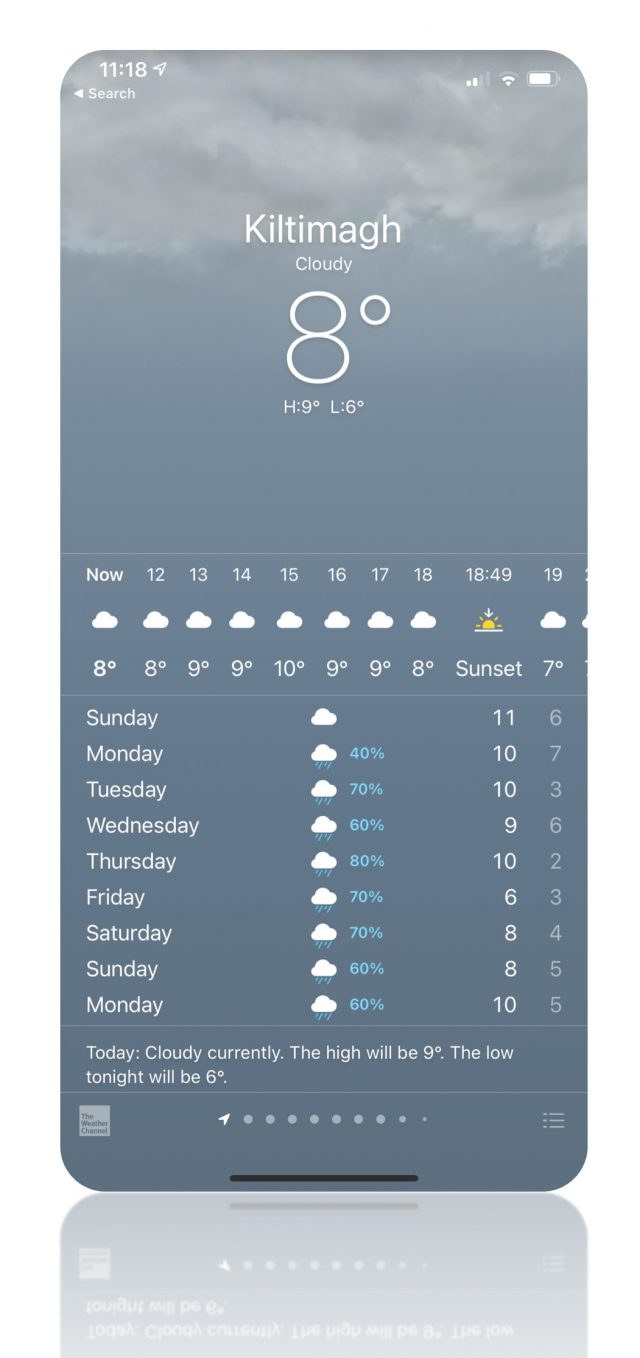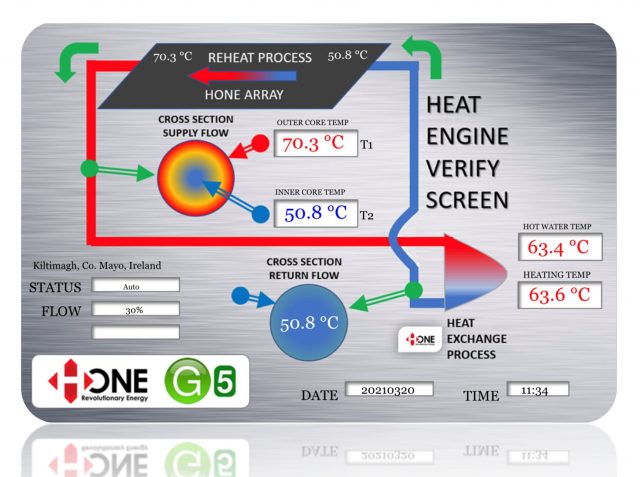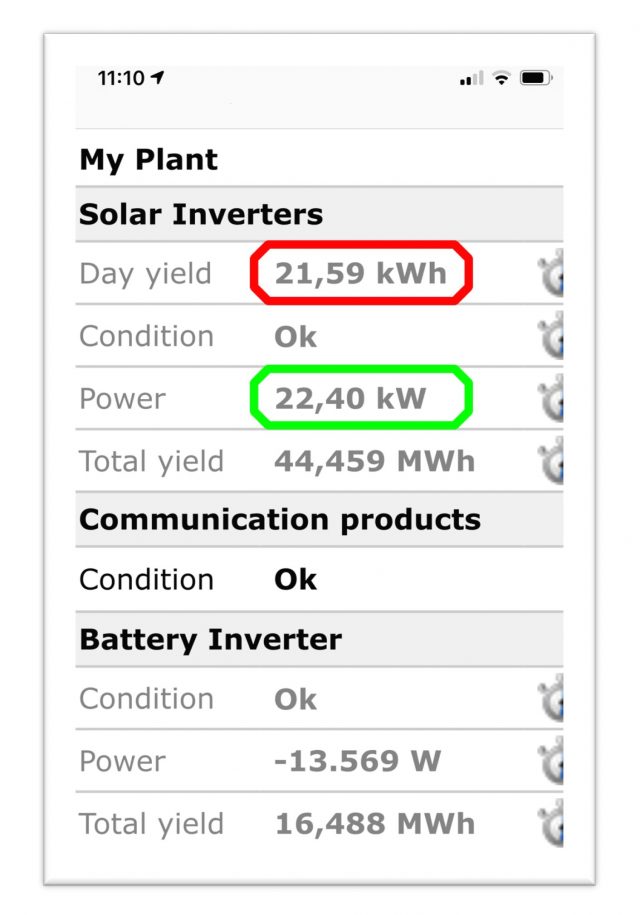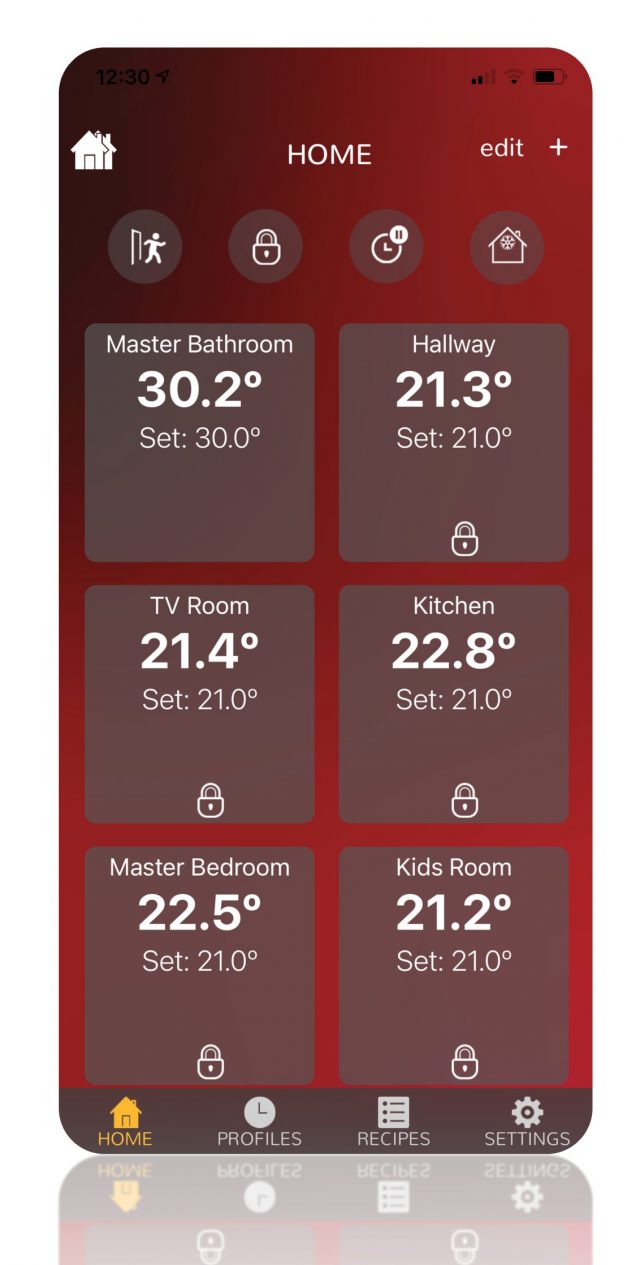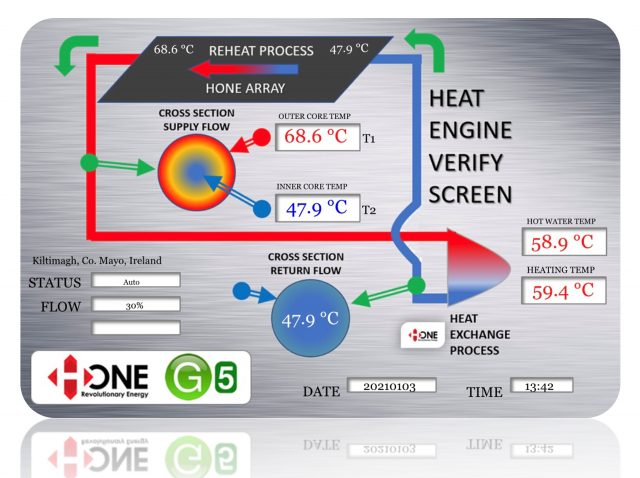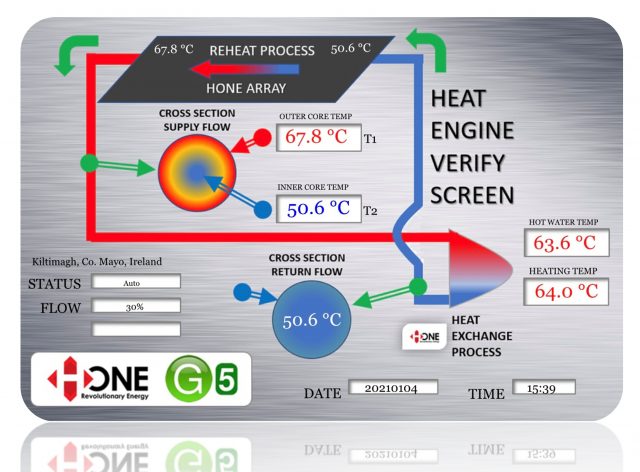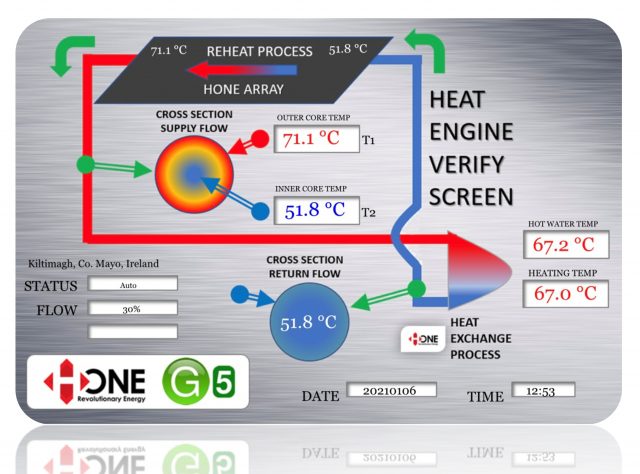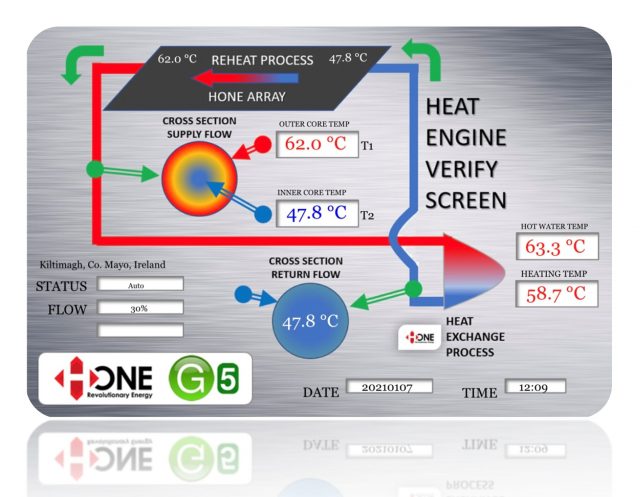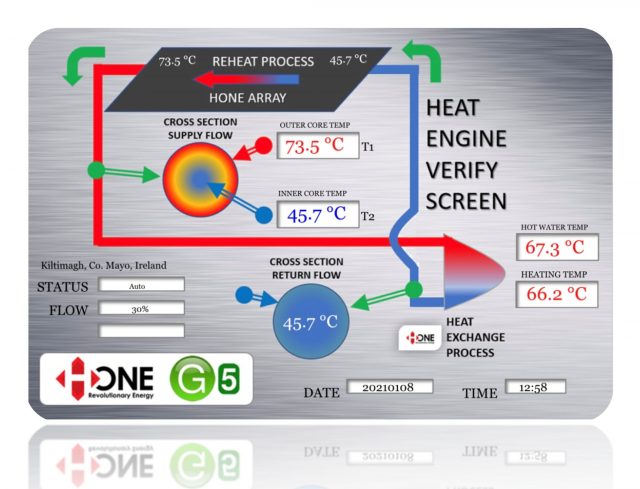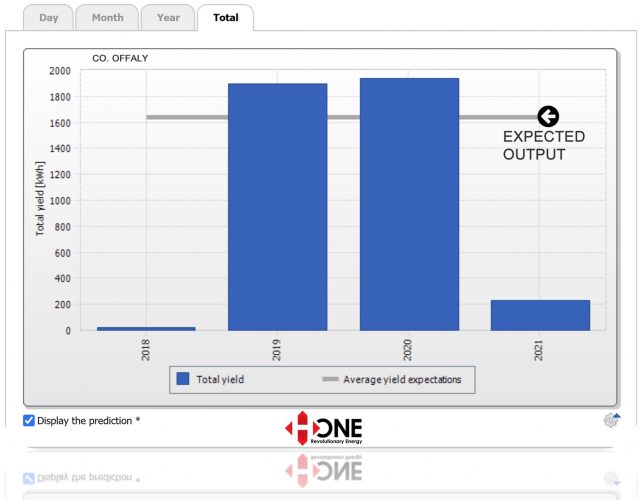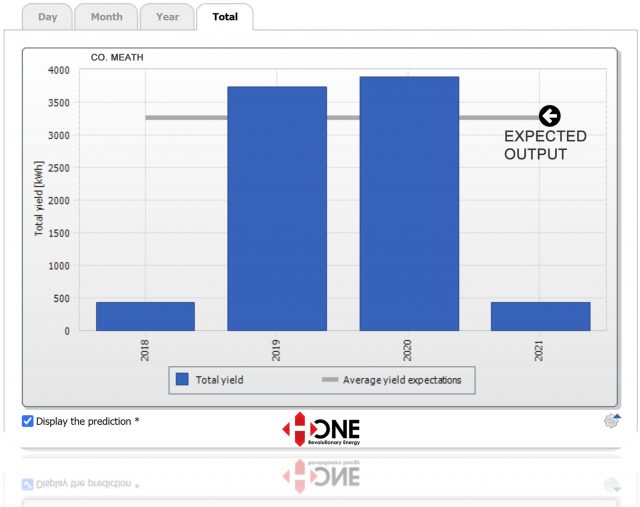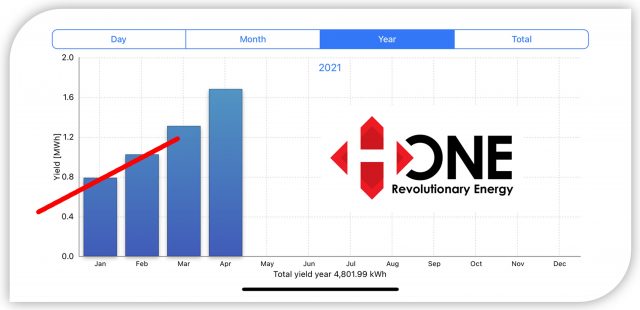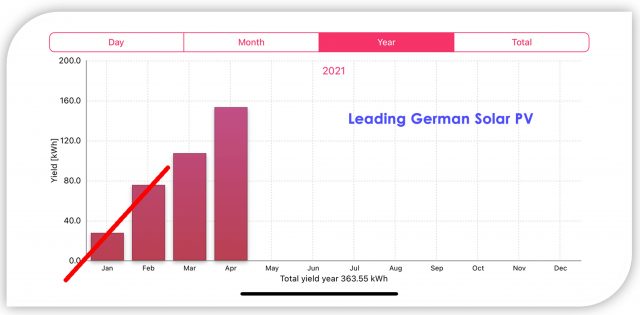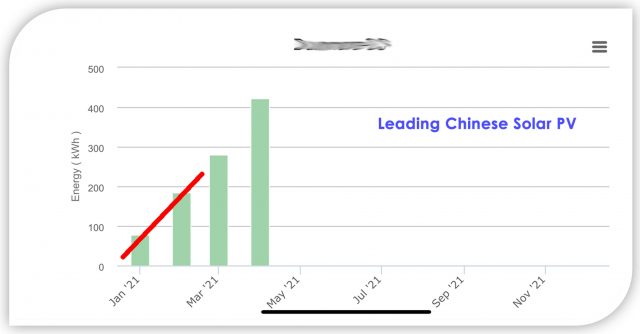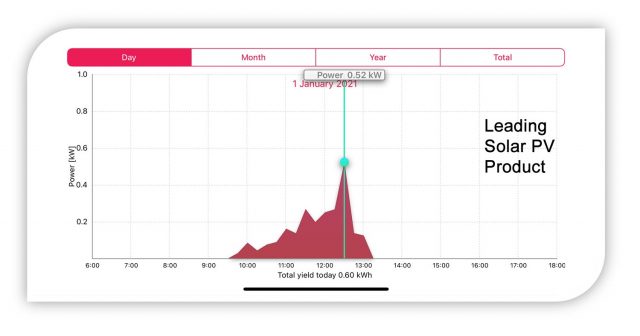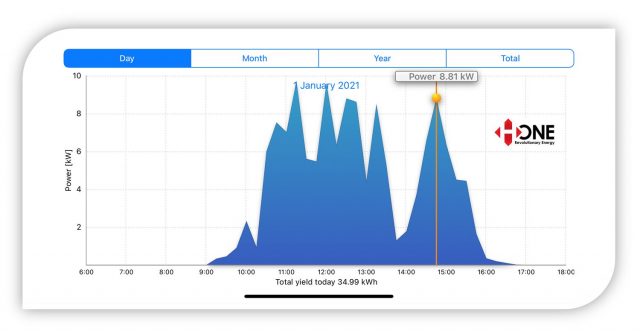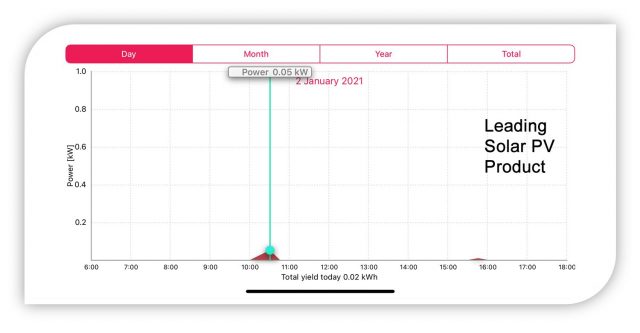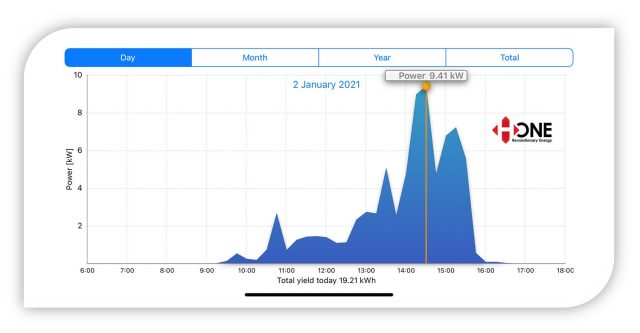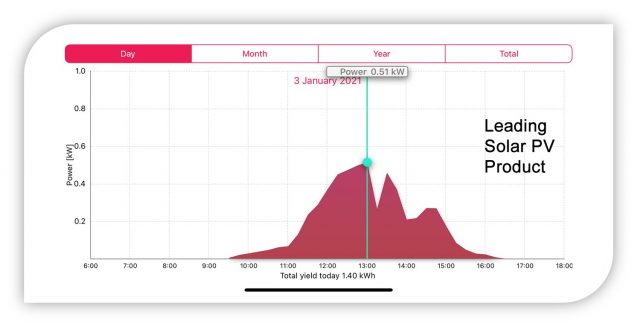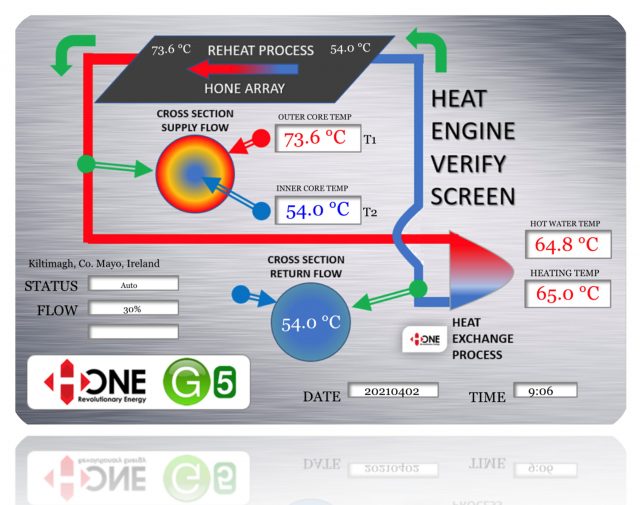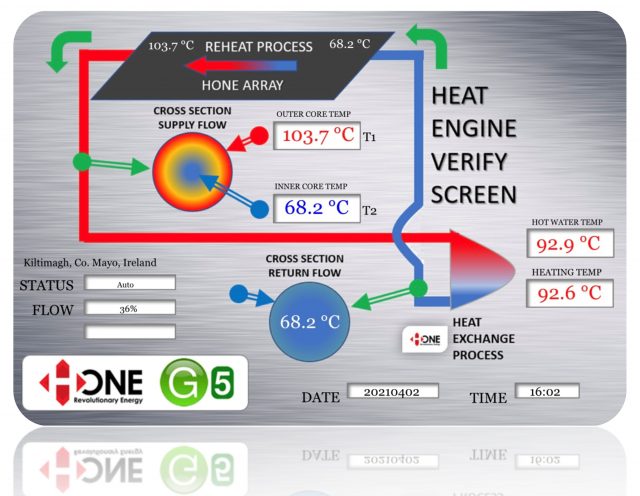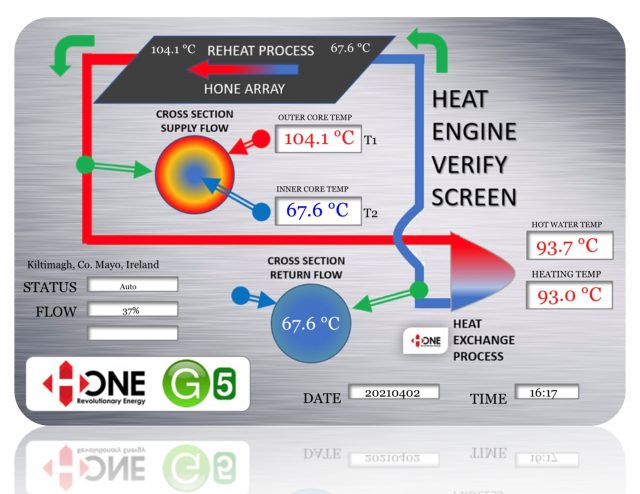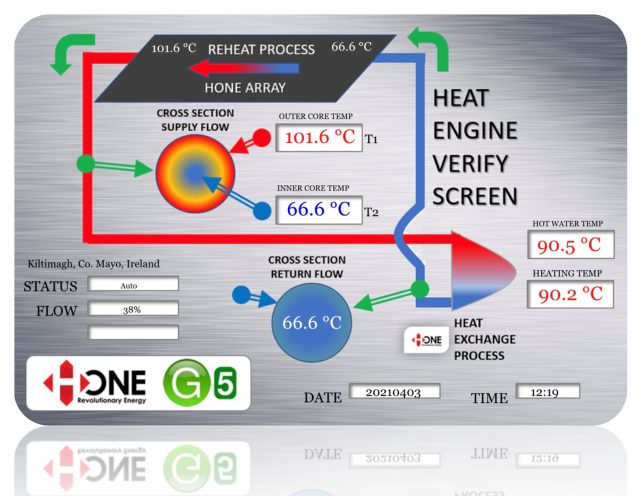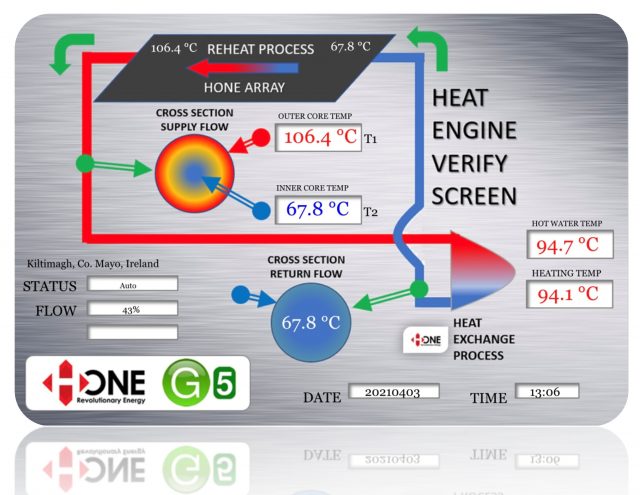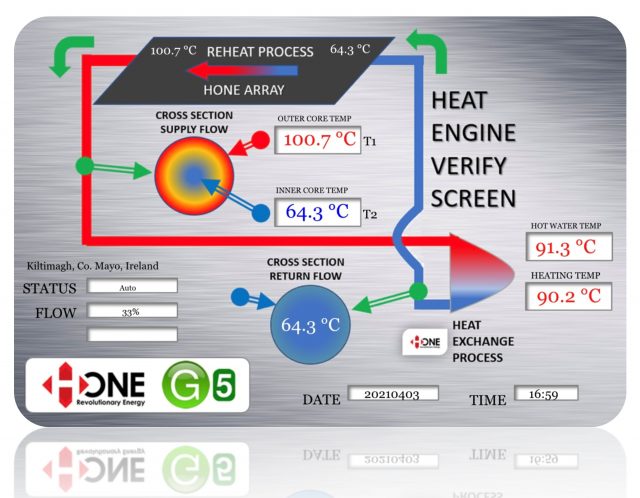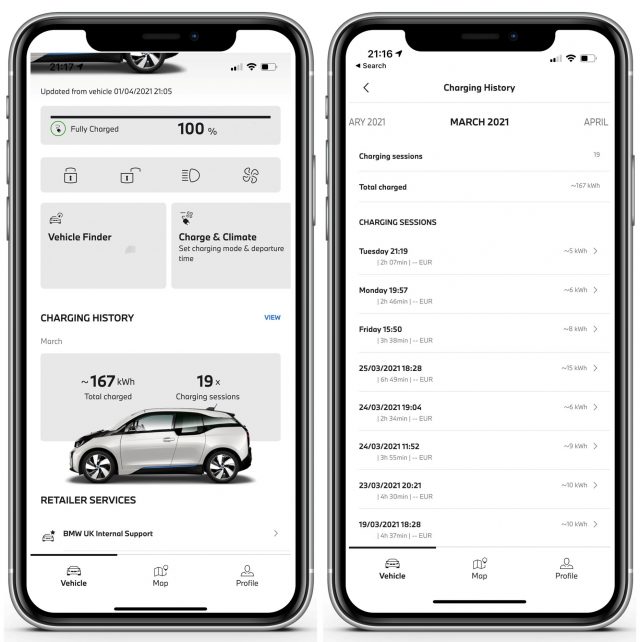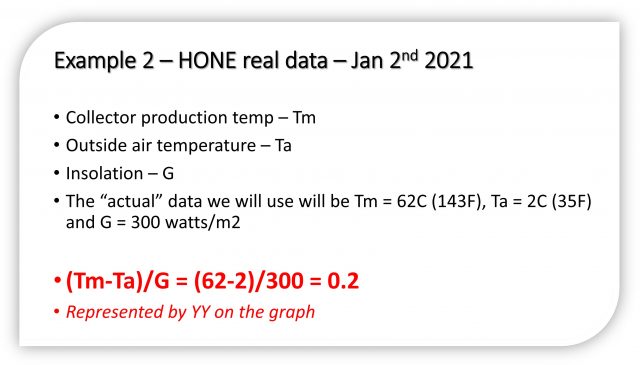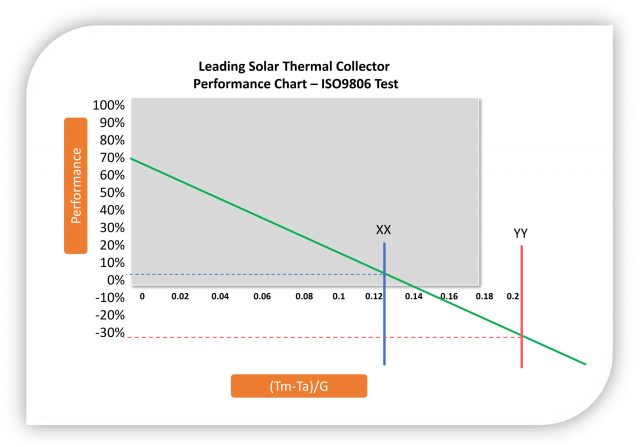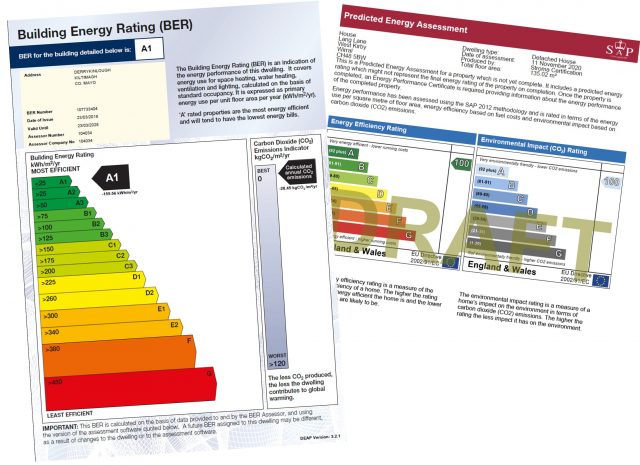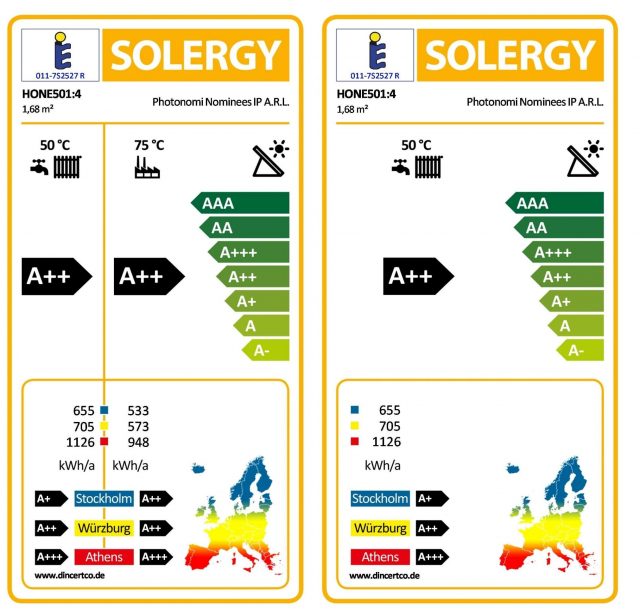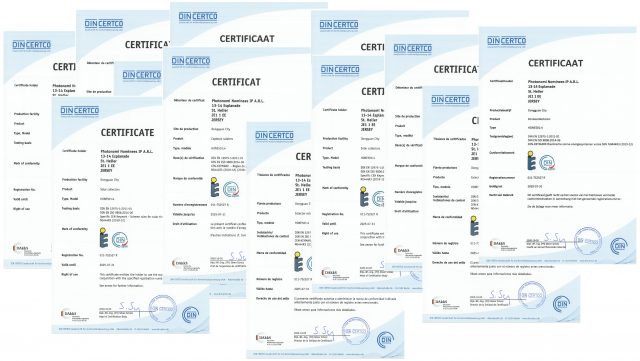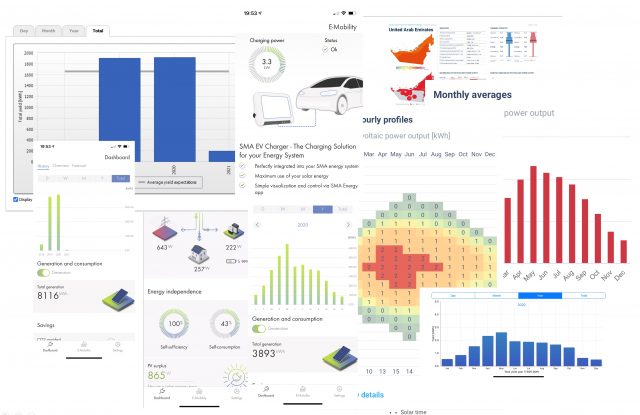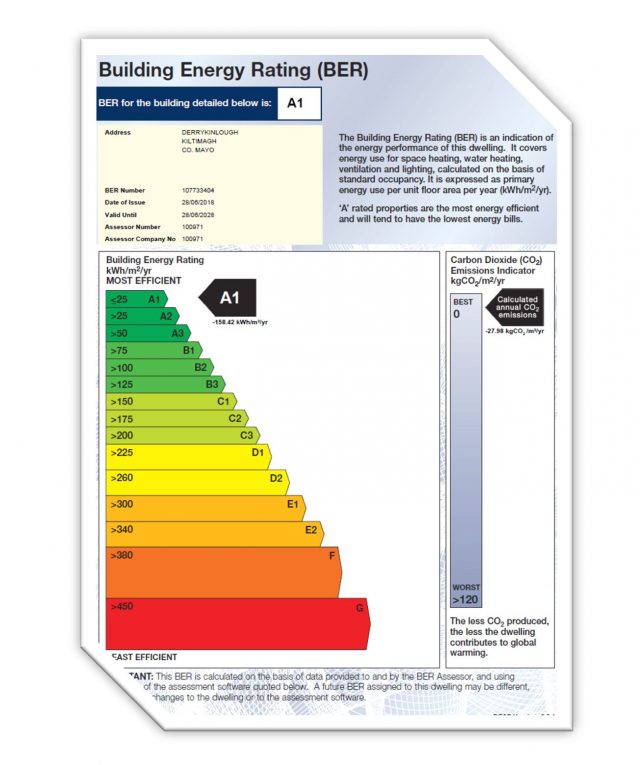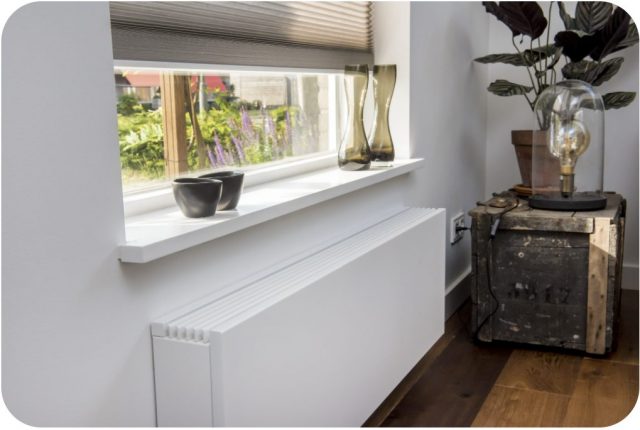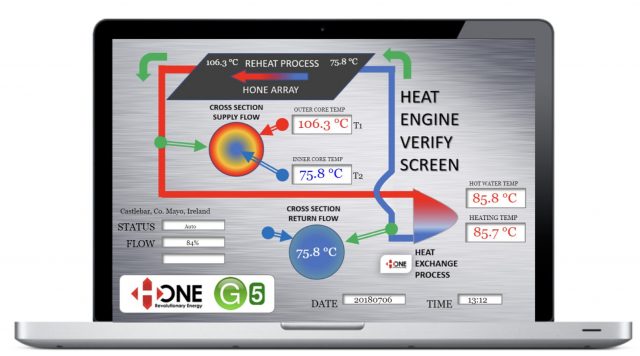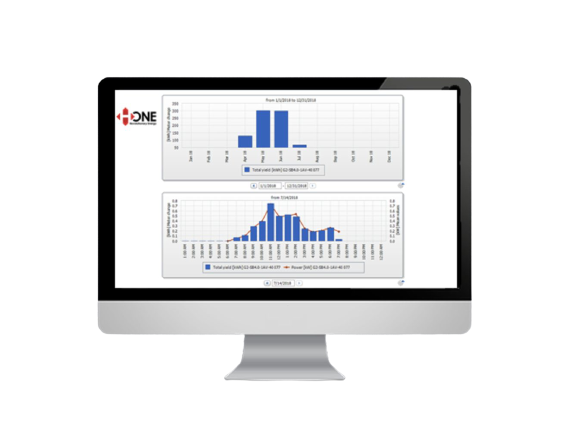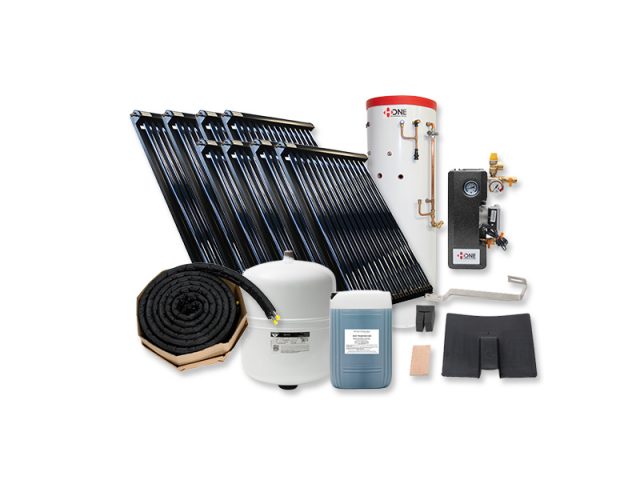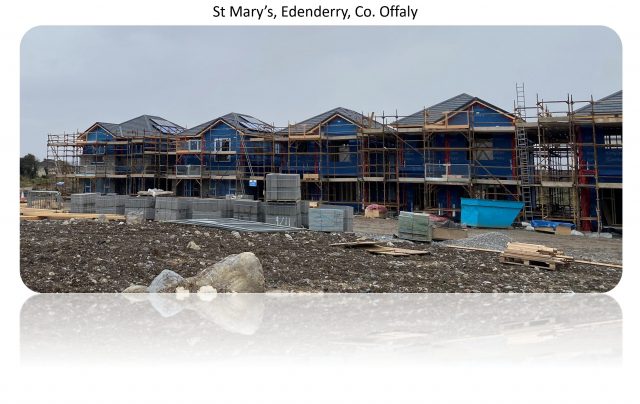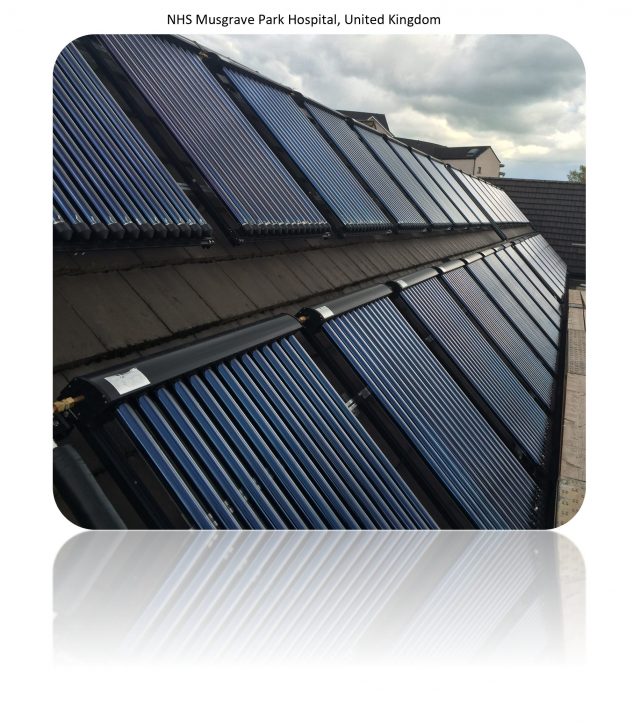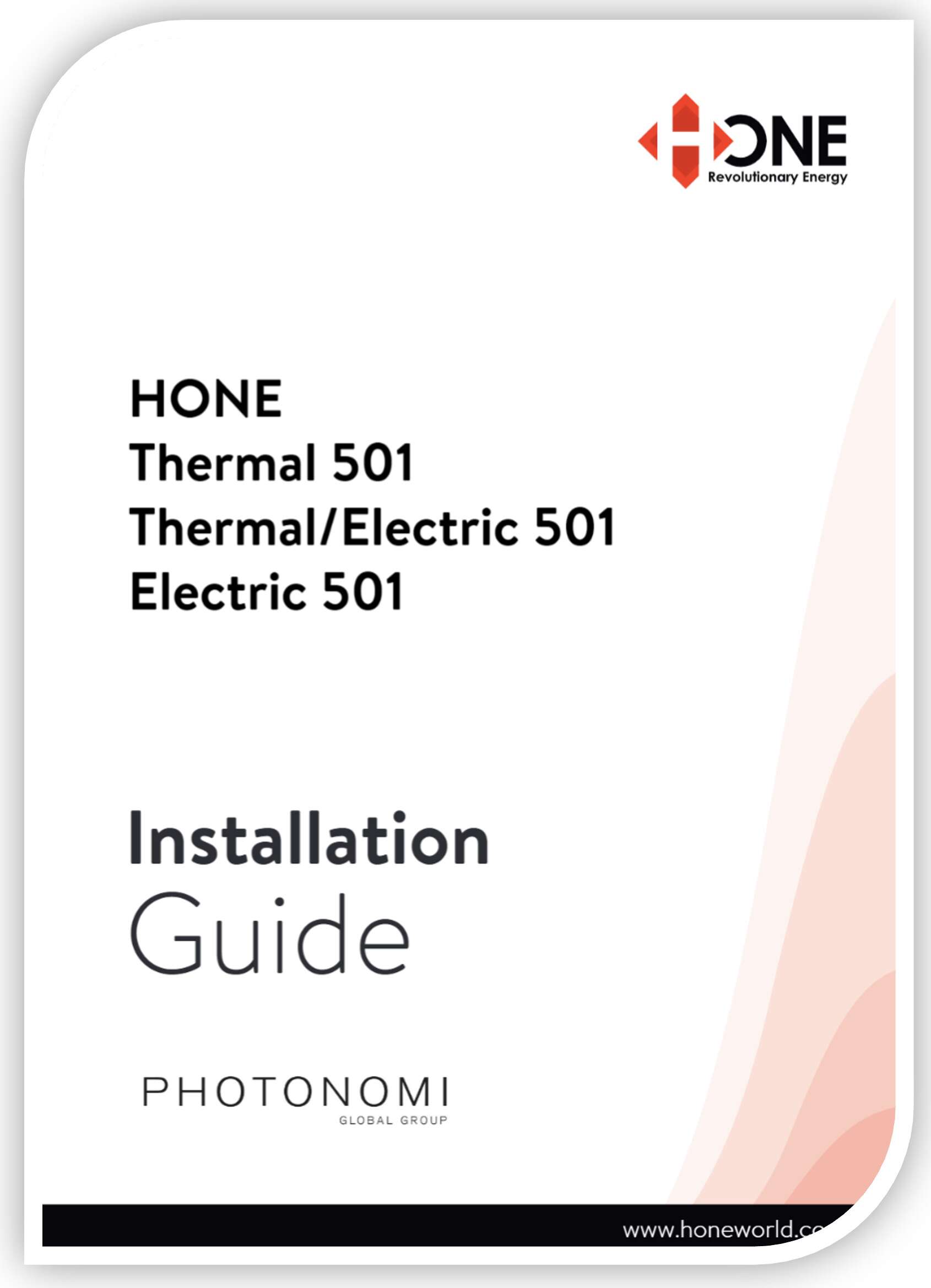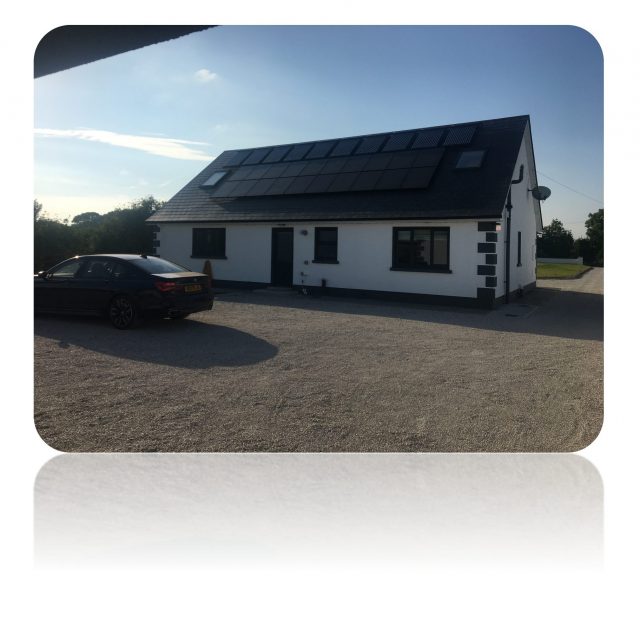HONE Science
HONE Thermal (+cooling) systems use a proprietary “cooler core” science to trap daylight. This ingenious science allows the system to function purely on daylight harvesting versus traditional solar hot water, which utilises the greenhouse effect, which needs sunshine.
This allows HONE Thermal systems to generate significantly higher temperatures and higher performance.
The stark contrast between HONE Thermal & traditional Solar Hot Water panels is the performance difference. HONE systems can deliver higher temperatures in cloud cover in winter than traditional solar hot water panels can produce in the sunshine in summer.
HONE Thermal nanotechnology manipulates the molecular science of the materials used. It is a high-pressure science and uses oxygen as a catalyst. All this magic happens internally in the system at a level that is measured in nanometers. All you see is the mechanical structure of the panels on your roof as normal.
Low level diffused daylight enters the system and is fooled into being lost into the cooler inner core. The inner core gets hotter, and the temperature delta between the hotter outer core is maintained. As the inner core gets hotter by trapping this daylight, the hotter outer core also gets hotter.
This science takes advantage of the Laws of Thermodynamics and tricks science into the most efficient renewable heat process to date.
The creation of thermal energy in a HONE system is 100% based on daylight and is 100% natural renewable energy.
See the performance section for more information.
HONE Electric science is based on 3 Dimensional semiconductor technology versus traditional Solar PV.
This has a significant advantage as the surface area is increased by approx 300%. Due to the multi-directional surface area, there is no advantage in facing this panel in a south-facing direction. This structure type can be installed facing east or west and optimised for diffused light and cloudy conditions.
This structure is optimised for winter performance and will outperform traditional Solar PV significantly over the course of a year, as shown in real-world studies.
These performance advantages in winter are nothing short of extraordinary. Climates with a lot of cloud cover and short winter have a significant advantage with this technology
HONE Thermal/Electric panels utilise both technologies in one panel to make heat & power from the same product.
This panel has the highest performance certification of any renewable panel globally. This HONE TE panel outperforms standard solar PV panels by 7 times more kWhrs of energy per sqm.
See the performance section for more information.
HONE Thermal Systems can be measured using COP and KW performance. Using a car analogy, COP is like horsepower, and KW is the size of the engine.
Using COP is the measurement of the energy consumed running the system versus the energy generated out, which gives you a COP value. A heat pump has a low COP as it consumes a lot of energy running a large compressor. This might typically average 1:3 across the year, which means for every kWh consumed, 3 kWhr are generated.
Looking at the following live screenshot of the HONE system from Jan 8th, 2021.
We can see the renewable heating production temperature is 73.5C, and the cool core temperature is 45.7C.
Using the chart below for this residential heating & hot water system, we get a COP of 1:551 and thermal power of 7.6 KW.
This is only a thermal COP. When we add in the renewable electricity from a HONE Thermal/Electric panel, the COP will increase significantly in the calculation.
HONE Innovation is all based on nanotechnology.
The word nano is from the Greek word ‘Nanos’, meaning Dwarf. It is a prefix used to describe “one billionth” of something.
1 nanometre is about 8 times the radius of an atom and 100 times smaller than a bacterial cell. At this scale, matter reacts differently; for example, a material’s melting point may change or become more reactive.
A human hair is 100,000 nm in diameter.
Nanoscience is not just one science. It is a platform that includes biology, chemistry, physics, materials science and engineering.
It is widely accepted that nanotechnology could revolutionize our lives over the next 20 years. Particular fields include disease identification and cure, drug discovery and delivery, environmentally friendly renewable energy sources, and ultra-high-speed mobile telecommunications.
Nanotechnology is multidisciplinary. Materials scientists, mechanical and electronic engineers and medical researchers are teaming up with biologists, physicists and chemists. Research at the nanoscale is unified by the need to pool knowledge on tools and techniques and share expertise.
Nanotechnology enables new developments in electronics, medicine, healthcare and many consumer products.
At the Nano level, the differences between scientific disciplines fade. Nanotechnology needs new approaches that cross the traditional boundaries between physics, chemistry, biology and engineering.
Nanomaterials are created by precisely controlling structure at the nanoscale dimensions to produce new materials.

HONE Performance
You will see we base a lot of reference data from the West of Ireland.
This is because this location has the lowest daylight levels in the world.
If you are in another global location, then all HONE solutions will perform better than this location.
Basically, if it works here, then it will work anywhere.
Here you can see the annual irradiation for other locations. HONE will perform better in these locations on a pro-rata basis. (click image to enlarge)
The significance of using Daylight instead of Sunlight as a fuel source is groundbreaking for renewable energy.
It supercharges the benefits of panel technology performance and the capacity of going to free energy outcomes. Everywhere on the planet has access to daylight; sunlight is only an occasional energy source in many places.
Here is an example of data from one project on 11:15 am on the 20th March 2021 in the West of Ireland.
This project is a residential home with HONE Thermal/Electric technology designed to do Renewable Heating, Power & EV Charging.
The following is the current skycam.
The following is the current MET office data.
The following is the current Renewable Heating data with 70.3C production temperatures. This Energy is 100% free produced from natural daylight.
The following is the current Renewable Electricity data with 22.4 KW of output (GREEN) and 21.59 kWh day yield by 11:10 am (RED). This Energy is 100% free produced from natural daylight.
The screenshot below is the live data from the heating system temperatures, all delivered by free renewable heating energy with a cool outside air temperature of 8C.
HONE is simply the highest certified performing thermal panel technology globally.
Using daylight innovation as a renewable energy fuel for renewable heating is a game-changer in energy technology.
This is based on our certified innovation but, more importantly, based on our real-world data performance, which everyone gets access to with our systems.
Example data from the West of Ireland, where the daylight levels are the lowest in the world, shows that even during January in the depths of winter, HONE can deliver staggering renewable heating temperatures regardless of the outside temperature once there is daylight available.
Screenshot 1 – Location Mayo – Jan 1st 2021 – free renewable heating production temperature of 65.5 Celcius.
Screenshot 2 – Location Mayo – Jan 2nd 2021 – free renewable heating production temperature of 62.6 Celcius.
Screenshot 3 – Location Mayo – Jan 3rd 2021 – free renewable heating production temperature of 68.6 Celcius.
Screenshot 4 – Location Mayo – Jan 4th 2021 – free renewable heating production temperature of 67.8 Celcius.
Screenshot 5 – Location Mayo – Jan 5th 2021 – free renewable heating production temperature of 66.9 Celcius.
Screenshot 6 – Location Mayo – Jan 6th 2021 – free renewable heating production temperature of 71.7 Celcius.
Screenshot 7 – Location Mayo – Jan 7th 2021 – free renewable heating production temperature of 62 Celcius.
Screenshot 8 – Location Mayo – Jan 8th 2021 – free renewable heating production temperature of 73.5 Celcius.
HONE is simply the highest performing electric panel technology globally. The results constantly exceed the performance of legacy systems.
Using daylight innovation as a renewable energy fuel for renewable electric is a game-changer in energy technology for the built environment.
This is based on our innovation but, more importantly, based on our real-world data performance, which everyone gets access to with our systems.
Please note, and it’s one crucial thing, there is no performance certification for Solar PV or similar technology (i.e. kWhr production per KW(p) installed). These electric technologies are only rating tested, i.e., 5 KW(peak) system. This means that 10 different 5KW systems from different manufacturers will all produce different annual kWh performance outcomes—the cheaper the product, the lower the output.
The consistency of performance from HONE systems is uniquely similar.
The systems below are datasets from installed HONE systems (blue graphs).
This system in Co. Offaly, Ireland below in 2020 had an annual performance output of 968.5 kWh per KW(peak), which is far more than the expected output. The only way to buy renewable electricity is based on prior history, which in this example is 13% more annual output than market-leading Solar PV according to the Government stated performance in that location.
This system in Co. Galway, Ireland below in 2020 had an annual performance output of 959 kWh per KW(peak), which is far more than the expected output. The only way to buy renewable electricity is based on prior history, which in this example is 11.6% more annual output than market-leading Solar PV according to the Government stated performance in that location.
This system in Co. Meath, Ireland below in 2020 had an annual performance output of 973.25 kWh per KW(peak), far above the expected output. The only way to buy renewable electricity is based on prior history, which in this example is 13.2% more annual output than market-leading Solar PV according to the Government stated performance in that location.
The system below IS NOT a HONE system but a well known branded product. It was purchased solely based on price, and this is what you can get when you buy the low-cost product. The expected output line represents the Governments expected output for leading premium product in this location.
For fairness, all these systems are south facing on the roofs of houses without shading. They are also installed with the same inverters and on the same reporting system, independent and under the control of SMA GmbH Germany.
If you ever had dreams of going off-grid someday, you will never manage that in certain locations without a high performing daylight fuelled renewable electricity technology.
This is one of the breakthroughs of HONE electric technology, an optimised semiconductor strategy for harvesting daylight without having to face south or be at a perfect angle.
To see whether you are looking at good Solar PV technology, first, ask to see historical winter performance and the angle of the ramp line from January to February. The flatter the ramp line, the better the winter performance should be. (the ramp line is in red). The steeper the ramp line, the more your renewable electricity will arrive during the summer months.
Generally, the steeper the ramp line, the lower the cost of the product, but that does not mean it is being sold to you at low cost, but just that it was low cost to buy.
In addition, ask to see historical data for January kWh output per KW (peak) installed. This allows you to get a “like for like” performance for systems of different size.
All the historical data for the systems below are working renewable electricity systems in the west of Ireland, so not the best weather and are located close to each other. We are using the public data available online. All systems are south-facing; the first two are on SMA inverters, and the third is on a Ginlong Solis inverter.
This HONE system above highlights the staggering winter performance from HONE even with the poor winter weather in the west of Ireland. The ramp curve is nice and low. In January 2021, this system produced 45 kWh per KW (peak).
This leading German made panel has a much steeper ramp angle from January to February.
In January 2021, this system produced 12.94 kWh per KW (peak).
The HONE system produced 250% more output than this system for January 2021 [per KW (peak)], which is 3.5 times more kWhrs produced.
This leading Chinese made panel also has a much steeper ramp angle from January to February.
This Solar PV system was installed in August 2019 under a Government tender and is considered one of the best panels on the market.
In January 2021, this system produced 15.30 kWh per KW (peak).
The HONE system produced 196% more output than this system for January 2021 [(per KW (peak)], which is 2.96 times more kWhrs produced.
Renewable Energy Technology comes in many different guises; you have renewable heat, renewable electricity, renewable cooling, renewable gas as examples.
You also have cheaper and premium technologies in this sector in a similar way to the car industry. If you bought a cheap car, you wouldn’t expect Ferrari performance.
As with any project, using the correct renewable technology in the correct place is key. A mix of technologies may fully optimise a project. The long term use, outcomes and application of that renewable technology are key to the best return on investment, whether a residential or commercial project.
Below is an example of data from 2 houses in the same area and during the critical winter period; the Standard Solar PV system, which is a leading German brand, was just bought as a product; i.e. no consideration was given to the problem being solved; however, the HONE system was designed as a solution with the desired outcome being at the heart of the solution design.
See the different outcomes both houses experience below.
JAN 1st, 2021 – COMPARISON OF HONE ELECTRICAL RENEWABLE TECHNOLOGY versus TRADITIONAL SOLAR PV.
The first RED graph shows this Solar PV project’s (not HONE) performance, which shows the total performance of that day (Jan 1st) at 0.60 kWh. This would boil a kettle for 12 mins.
The second BLUE graph shows the HONE project’s performance, which shows the total performance of that day (Jan 1st) at 34.99 kWh.
This would boil a kettle for 700 mins (11.6 hours) or provide the total daily electricity requirement for three and a half homes.
The highest Peak Power output on RED was 0.52 KW (520 watts) & on BLUE (HONE) was 9.7 KW (9,700 watts) on Jan 1st 2021.
JAN 2nd, 2021 – COMPARISON OF HONE ELECTRICAL RENEWABLE TECHNOLOGY versus TRADITIONAL SOLAR PV.
The first RED graph shows this Solar PV project’s (not HONE) performance, which shows the total performance of that day (Jan 2nd) at 0.02 kWh. This would boil a kettle for 24 seconds.
The 2nd BLUE graph shows the HONE project’s performance, which shows the total performance of that day (Jan 2nd) at 19.21 kWh.
This would boil a kettle for 23,052 secs or 384 mins (6.4 hours) or provide two homes’ total daily electricity requirement.
The highest Peak Power output on RED was 0.05 KW (50 watts) & on BLUE (HONE) was 9.41 KW (9,410 watts) on Jan 2nd 2021.
JAN 3rd, 2021 – COMPARISON OF HONE ELECTRICAL RENEWABLE TECHNOLOGY versus TRADITIONAL SOLAR PV.
The first RED graph shows this Solar PV project’s (not HONE) performance, which shows the total performance of that day (Jan 3rd) at 1.40 kWh. This would boil a kettle for 27 mins.
The second BLUE graph shows the HONE project’s performance, which shows the total performance of that day (Jan 3rd) at 58.84 kWh.
This would boil a kettle for 1,179 mins (19.6 hours) or provide six homes’ total daily electricity requirement.
The highest Peak Power output on RED was 0.51 KW (510 watts) & on BLUE (HONE) was 12.74 KW (12,740 watts) on Jan 3rd 2021.
The moral of the story is simple; if you buy premium product solutions, they should be designed correctly to meet the needs of the applications and needs of the project, and there will be an excellent outcome.
If you buy something from a salesperson pre-packaged for nobody in particular, which is aggressively sold to you, then you could be throwing your money away: Caveat Emptor.
This is easier than you may think, but it is also easy to get completely wrong.
Design is key, and you need to “buy” a solution for your exact home, not “sold” a generic one size fits all solution.
If you think good design is expensive, you should look at the cost of bad design.
Dr Ralp Speth – CEO Jaguar.
This is also a design process.
Commercial projects all have different energy profiles.
Heating, Electricity, Cooling, Transport, Water.
There are renewable solutions to reduce all these energy sources, and renewable heating can be used for heating & cooling, renewable electricity for electricity & EV charging.
There is no limitation on the size of the installation.
Often when we are involved in discussing project options, the project design looks completely different from the project the customer originally conceived.
HONE solutions can be applied to any size project and have the added advantage that you don’t need any local grid.
We can put large systems anywhere in the world where there may be no existing energy supplies, whether heating, cooling, hot water, or electricity.
HONE energy is all free and 100% renewable.
HONE performance data is primarily benchmarked on poorer weather locations as all other locations will perform better. HONE is a daylight harvesting technology designed to deliver high performance in cloud cover and cold outside air temperatures.
However, what would HONE Thermal system data look like if you wanted to do a residential or, more importantly, a larger commercial installation in a sunny location such as in buildings like hospitals, hotels, resorts, factories or campuses.
A sunshine day for HONE is a day where there is just more daylight to harvest.
To demonstrate this, we will use our west of Ireland reference location; any other location considered a sunshine location would have significantly higher output potential than this data, typically multiples of annual daylight.
This data covers two sunny days, 2nd & 3rd April, pretty rare in this location. So you can see the air temperature is pretty low, between 7C [ 44F ] to 14C [ 57 F].
Image 1: At the start of the day at 9:06 am, the HONE thermal system production temperature is already at 73.6C [ 170F ], a COP of 1:383.
Image 2: At 1 pm, HONE production temperatures are 102.3C [ 216F ], a COP of 1:652.
Image 3: At 3:45 pm, HONE production temperatures are 102.1C [ 215F ], a COP of 1:696.
Image 4: At 4 pm, HONE production temperatures are 103.7C [ 218F ], a COP of 1:732.
Image 5: At 4:20 pm, HONE production temperatures are 104.1C [ 219F ], a COP of 1:753.
Image 6: At 12:19 pm the next day, HONE production temperatures are 101.6C [ 214F ], a COP of 1:710.
Image 7: At 1:06 pm, HONE production temperatures are 106.4C [ 223F ], a COP of 1:753.
Image 8: At 5 pm, HONE production temperatures are 100.7C [ 213F ], a COP of 1:732.
Even on a cool day outside, this data highlights how HONE thermal technology can be used for all types of applications.
This performance happened in the West of Ireland at a location with only 630 kWhrs annual DNI radiation.
100% of the energy harvested was 100% free, clean, renewable energy.
HONE Applications
A HONE hot water system can be installed using HONE thermal only or HONE thermal/electric panels on the roof.
You will need a new HONE customised hot water cylinder, and typically this will be 300L in size in a residential project. You cannot use a standard solar hot water cylinder with a HONE system as they typically only have an exit coil which is 0.8 sqm in surface area. HONE cylinders have an exit coil of 3.75 sqm due to the high amount of heat energy produced.
The cylinder is installed in your hot press or wherever your current or planned cylinder location is.
A pipe set will run down from your roof into a control station. Unlike old-style solar hot water panels, the HONE thermal panels will do most of the heat’s pumping down to the cylinder.
Systems run automatically, and a 5-panel HONE thermal system is designed to do approx 90% of typical annual hot water needs.
A HONE thermal heating & hot water system is a system that feeds into your radiators (underfloor) as well as a hot water system.
It is only used in retrofit homes where the heat load remains very large, and it is now becoming prevalent in commercial projects.
A typical configuration would be an oil or gas boiler with radiators and a hot water cylinder.
The heating system has three loads to deliver; firstly, when you turn on your heating, your boiler has to heat up from the cold and start heating the floor, the pipes, and cold water in the system. This can take 30-40 mins. This is about 60% of your oil or gas consumption.
Secondly, the maintenance heat, where your boiler tips in and out maintaining the heat, is the next load at about 20% of oil or gas consumed.
Thirdly, your hot water production is the next load and about 20% of your energy.
There is a high-temperature heating and hot water buffer cylinder in a HONE heating system, which remains hot all the time. It is designed to heat your radiators within 3 or 4 minutes. About 45% of your oil & gas consumption is saved this way.
The maintenance heat is still left to the boiler, and up to 90% of your hot water will also be generated free.
This means you get a typical saving of 60% of your total heating/hot water bills using free renewable heat.
Using renewable heating for cooling is something that will become mainstream as we decarbonise. Electricity is the primary fuel used to generate cooling in large chillers.
As the price of electricity increases due to inflation, carbon taxes and grid investment, producing commercial cooling (air-con) will become cost-prohibitive.
Renewable cooling works by creating a large amount of heat at temperatures between 80C to 110C and feeding that heat into industrial chillers.
The chillers using evaporation and condensing processes turn that heat into cold water. That cold water is then fed into air handling and air conditioning systems.
A basic on-grid renewable electricity system involves placing panels on your roof, wall or ground.
These panels click and connect, and a cable is dropped down into your building to your fuse board. The system is connected to your fuse board, and the electricity is used in your house first and has the effect of slowing down your meter during the day. These systems are small in size in this format.
Private grid or off-grid systems are more technical installations and not limited in size. You can have a 10 Megawatt renewable electricity system in your home if you have space.
Numerous monitoring options can highlight your production and also your import/export.
All HONE systems with smart car chargers talk to each other on the app and fully integrate your solution as one combined system.
Car charging systems are similar to panel technology. You can buy cheap or buy premium.
Basic car chargers charge at 3.7 KW, and in reality, this is the most you need. It would be best if you always charge your battery as slow as possible.
Chargers come in single-phase and three-phase supply.
Always pick one with smartphone service as you will be able to access the charger information.
If you have a basic dumb charger, most EV’s allow you to control your car and its charging function using smartphone apps.
Invariably, to extract the best from HONE technology, there will be a battery involved. This could be simple self-consumption with a small on-grid or a full private grid with large systems.
You can buy various battery systems, but there are low-cost batteries and premium batteries as with all renewable technologies.
Battery specifications to check are the cycle count and the depth of discharge, don’t just look at the price.
A battery with a specification of 8,000 cycles with a depth of discharge of 100% would last 21.9 years if it were cycled fully every day.
A battery with a specification of 4,000 cycles with a depth of discharge of 60% would last 6.5 years if it were cycled fully every day.
We only supply battery specifications of 8,000 cycles with 100% depth of discharge in all cases.
(cycling refers to a fully charged battery being drained each day fully, 8,000 cycles divided by 365 days = 21.9 years at 100% depth of discharge)
A solution is just that; it is not a single element.
A home needs a mix of heat, power & drive renewable energy using more than a singular technology. We can deliver that in the most efficient method with the shortest payback.
A commercial project is no different, and again depending on the application, it will need a mix of renewables meeting different requirements.
As carbon taxes increase and large financial investments are made in building complicated grids for electric heating & electric car charging, the price of energy is going in only one direction

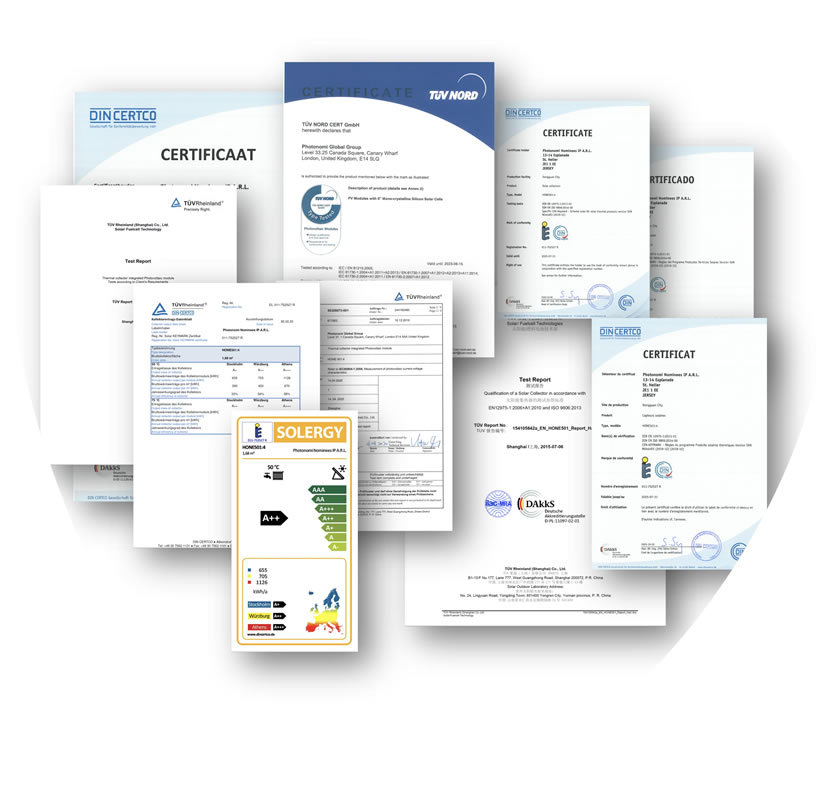
HONE Certifications
HONE Thermal, Thermal Electric & Electric Technology is certified in over 160 countries globally, and all product is manufactured to ISO9000.
This certification underpins the quality of our products and performance.
ISO 9806, ISO9001, IEC60904, IEC61215, EN12975, BAFA Germany, Keymark FR, Keymark ES, Keymark NL, Keymark DE, Keymark PL,Keymark IT, Keymark CH, Keymark AT, MCS UK, SEAI, SRCC USA, OG-100, OFGEM, ACA, Triple-E, NZS/AS.
Worldwide notified bodies for HONE Product Certification are TUV Rhineland GmbH in Europe, TUV NORD in Asia & ICC-SRCC in the Americas.
We pride ourselves on being the best but also on the ability to prove it every day. Claiming to be the best should always be backed up with proof, and while our international certification provides evidence of that performance, we can also see it in the live data.
Our electricity systems stand on their own data, but here we will look at HONE renewable heating/hot water, which is a little more complex to ascertain performance.
1. The next graph is the solar hot water certified testing performance graph of a leading solar hot water panel (they claim to be the most efficient in the world); if you are familiar with these graphs, it is not untypical
2. This next mage is a live screenshot taken on Jan 7th, 2021, from a HONE heating & hot water system. It shows 62C (143F) production temperatures, which is a compelling performance result for the depths of winter. Many traditional solar hot water systems would struggle to meet this type of temperature in summer, let alone on Jan 2nd in the west of Ireland.
3. The next slide uses test data to show what collector performance you would get using the”leading” thermal collector data shown in the first slide. We are assuming a collector temperature of 45C, outside air temperature of 2C. We are assuming exceptional performance on the 2nd Jan, although it is worth stating that standard solar hot water panels would not achieve production temperatures of 45C in this location on 2nd Jan.
We can see that the efficiency is calculated at 0.12, which is shown on slide 5. The result shows that this collector would be operating at 4% performance efficiency in these conditions. The result is shown as XX in blue. This would be in keeping with expectations that this leading solar hot water collector would have no performance in these conditions.
4. The next slide is the “actual” HONE system data above on Jan 2nd reversed into the performance graph of the leading product above. This allows us to do direct comparisons of performance. The real data from the HONE system on Jan 2nd was 62C, with the same outside air temperature of 2C. The irradiation on the day was 300 watts/m2.
We can see that the efficiency is calculated at 0.2, which is shown on slide 5. The result shows that the HONE system would be operating at minus 32% performance efficiency in these conditions. The result is shown as YY in red. We know from the dataset that the HONE system was operating at 5.3 KW and a COP of 1:384.
Compared to the certified performance graph of a leading solar thermal product with production temperatures on Jan 2nd at 62C, if HONE has the same performance, we would measure minus 31% performance, so absolutely no energy.
From the live screenshot taken above, we can see the HONE system was producing significant energy on the day. This proves that the performance of HONE is literally light years ahead of this leading solar hot water product which is claiming to be the world’s most efficient.
This is why HONE renewable technology is the world-beating next generation must have energy solution.
HONE has such excellent performance results that it excels is preparing your EPC (Energy Performance Certificate), also known as DEAP/BER/SAP Rating.
Achieving excellent results for nZEB and Net Zero in your EPC is easy to meet using HONE solutions. It would be best if you always designed upgrade options or build your home using the EPC data in advance.
From December 31st, 2020, it is the law to met nZEB compliance on both new and existing buildings.
Unlike standard solar hot water collectors, HONE Thermal & Thermal Electric systems, due to their high performance, are accredited for use within Central Heating or Process heating systems (radiators/underfloor) in addition to Hot Water Systems.
This is important in switching older residential homes and commercial buildings to free renewable energy options.
This applies to residential, commercial & industrial renewable heating systems.
The Keymark standard is a certification mark for solar thermal products operated by CEN/CENELEC.
Every certified product is in full conformity with the relevant European standards and fulfils additional requirements to assure constant quality. This quality level is maintained by initial type testing and regular control of the products and their production sites by independent inspectors. Consumers and authorities can fully rely on certified products.
For these reasons, Keymark is the basis for most European supporting schemes, and it is also increasingly recognised or adopted worldwide.
CENELEC is responsible for European standardization in the area of electrical engineering. Together with ETSI and CEN, it forms the European system for technical standardization. Standards harmonised by these agencies are regularly adopted in many countries outside Europe which follow European technical standards.
HONE Thermal systems have been certified under ICC-SRCC with the highest annual performance output per sqm.
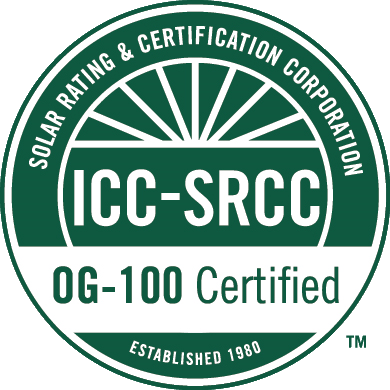
The ICC-SRCC OG-100 Solar Thermal Collector Certification Program addresses solar thermal collectors based on the current ICC 901/SRCC 100 Solar Thermal Collector standard. The standard sets minimum safety, durability and performance requirements for many types of solar thermal collectors used for fluids like water, glycol and air. Compliance with the ICC 901/SRCC 100 standard is required in most building codes in use throughout North America, including ICC’s IBC, IRC, IMC and IPC model codes.
The ICC 901/SRCC 100 standard also requires performance testing and references the internationally accepted test methods in the ISO 9806 standard. OG-100 certifications provide standardized performance ratings to make it easy to compare collectors on an equal basis. Incentive programs and regulations throughout North America recognize OG-100 certification.
The only data that counts is the real-world data on performance, not the theoretical or “salesman” claims of performance, even if that does show our outstanding performance.
HONE systems all come with data options that evidence and prove HONE solutions outperform legacy renewable technologies across the board, a statement we don’t make lightly. Still, we can make it due to the vast history of proven data in the marketplace.
HONE is groundbreaking nanotechnology that harvests daylight instead of sunlight leading to a significant performance advantage over traditional and legacy renewables.
Using technology that produces 100% free clean, renewable energy is the cornerstone of climate change objectives.
See our performance section for more details.
We also publish performance examples on our Twitter feed here.
HONE Zero Emissions
The EPBD (EU Energy Performance of Buildings Directive) requires all new buildings from 2030 (public buildings from 2027) to be ZE Zero Emissions buildings (ZE).
NOTE: For the first time, it also now applies to all existing buildings. If you plan to do upgrades, your home or building must also meet the new ZE retrofit regulations by 2050. This has significant implications for residential & commercial upgrades.
Onsite renewable energy is key to meeting the 2050 EU ZE standard on all buildings regardless of size or use once people use the building.
As HONE solutions are high yielding renewable energy systems, we can sail through ZE compliance, whether it is an A1 ZE rating in Ireland or a Net Zero A100 SAP rating in the UK.
Europe and Ireland’s best energy rated residential home is powered by HONE Thermal/Electric systems and has no energy bills. It is also a retrofit home.
See the case study section for more information.
This use of similar acronyms can be confusing.
Zero Emissions (ZE), the 2050 EU building standard, which is mandatory from 2030, require Zero Emissions (note this is NOT Net Zero Emissions which is different. This model requires renewable energy systems compulsory that produces free energy on-site, your own free energy systems for life.
This model is the most cost-effective for the homeowner as long as heat pumps are not used as these “consume” expensive electricity and require additional expensive fabric improvements. Hence, they are more fitting with the Net Zero category below.
Zero Emissions are buildings that make as much renewable energy as they consume. This is not so good for the homeowner as they will still have plenty of energy bills to pay. It is, however, perfect for the Government as they will meet their CO2 reduction targets as a country. However, you will still have to buy your energy, and that usually means expensive electricity.
An example of a Net Zero building would be one with a heat pump that will take in electricity from the grid to operate it. That gets counterbalanced by a Solar PV system which creates electricity. Unfortunately, these systems work at different times of the year, so you don’t see significant savings, but the state gets the overall benefit as that green electricity spills onto the national grid as it cancels out the emissions of the grid electricity.
Zero Emissions is best for the homeowner, and the other Net Zero is best for the state.
A positive energy building is the next generation of the building that will filter through regulations. This is the ultimate building format.
You have no energy bills for life.
It relates to a building that makes more energy than it consumes; it can be off-grid, private grid or grid-connected.
Europe’s best energy rated home in Ireland is a PEB building, and the excess energy is used on-site for EV charging, heating, etc.
The primary difference between HONE and a Heat Pump option is as follows:
- HONE makes free clean, renewable heat & electricity energy, thereby significantly lowering your energy bills. In contrast, a Heat Pump consumes grid electricity, so you are still buying 100% of your energy for heating, hot water & electricity.
- HONE lowers your construction cost, typically by €250 a sqm.
- HONE speeds up your practical completion (typically 2 weeks faster).
- HONE increases the energy rating to an A1 Zero Emissions/A100 or even better.
- HONE has practically zero OPEX maintenance requirements versus Heat Pumps with significant maintenance costs (Heat Pumps come with a maintenance plan requiring homeowners to do daily and weekly checks & service engineers to do annual services). Download Heat Pump Maintenace Guide Here
- HONE does not use any harmful materials, whereas Heat Pumps, filled with hydrofluorocarbons (HFCs). Every 10 Kgs of these F-Gases that could leak would release 20 tonnes of CO2 equivalent into the atmosphere. According to BREEAM, a residential heat pump leaks 6% of toxic refrigerant gas a year. A common R410A heat pump refrigerant would equal over 2 Tonnes of Co2 equivalent per year or the equivalent of driving 14 673 km. To give you a benchmark, a modern home is responsible for 1.2 tonnes of CO2 per year.
- HONE is silent, unlike a Heat Pump. READ THIS STORY ABOUT NOISE
- Unlike a HONE system, you will need a backup heat source for times when your heat pump breaks down. When a heat pump loses some of its gas, or you forget the major annual service, the heat pump external unit in cold weather will start freezing up and start taking heat from your house to defrost the outside unit. It will also turn on the auxiliary immersions, thereby costing you lots of money whilst you still potentially have a cold house. If a part goes in your heat pump or is totally degassed, you could be without heat for many days until it is fixed.
- HONE does not require an expensive underfloor heating system (but you may want it, and that is no problem, we can work with that too).
- HONE does not require the expense and time-wasting of pouring a second screed (again, you’ll need it if you want underfloor, and that’s ok).
- HONE does not require the huge and expensive fan-assisted aluminium radiators that you need for a heat pump, see picture below).
- HONE has a 50-year design life; you will have purchased 4 new replacement Heat Pumps in that period.
- HONE can be deployed from the smallest terraced house to the largest apartment complex easily.
- HONE systems are modular and fully expandable.
- HONE does not require an enhanced electricity connection, unlike a Heat Pump.
- HONE increases the sales value of the property significantly.
- HONE systems are 100% recyclable.
Whilst this example is from Ireland, it equally applies in the UK or any other country.
Here is the actual data from a detached new house in Dublin, names and location removed.
It originally was designed with a heat pump, and the provisional energy rating was an A2 nZEB. It was switched to a HONE system with micro oil backup which will use HVO renewable fuel when available and is now an A1 Zero Emissions Home.
It also shows the QS analysis that the home was €175 per sqm cheaper to construct. The annual heating bill will be €230 as verified by SEAI DEAP software.
The outcome is not a basic A2 nZEB but an A1 Zero Emissions. This means the home produces the same amount of energy as it consumes.
Unlike the heat pump option, where you still have to purchase 100% of your heating, hot water & electricity, the HONE option produces up to 90% of your annual hot water needs, 100% of your electricity with over 22,000 km of free EV charging per year if that suits your lifestyle.
As the HONE system has a design life of 50 years, you would have bought 5 heat pumps in that timeframe, 1 new one and 4 replacements.
Download the financial analysis here. QS-GAP-ANALYSIS-v3.0
Read the SEAI DEAP Dwelling Report here.
Read the SEAI DEAP Part L Report here.
To make the best decisions on your energy future, you need to understand the politics of energy.
Firstly, your Government didn’t decide to end fossil fuel; it was landed on them. They make too much money on the back of fossil fuel. In Europe, the European Commission, primarily looking out for Joe Citizen, is responsible for all the energy reduction laws that countries have adopted.
So how have countries reacted. They have decided to move everyone onto the electricity grid and fund lots of new green renewable energy so you can keep buying your energy centrally, and they can keep collecting taxes from you.
This is why Government will never show you a path to making your own free clean energy, as there is just too much money in keeping things operating the same old way.
We, however, believe in the democratisation of energy and will show you the way to making your own free clean, “much cheaper” energy. This is why buildings with our technology are smashing their carbon and costs with ease.
Making the correct decisions today mean you will have saved significant amounts of your income by not wasting it on generating big profits and taxes for others.
Imagine how much you will be paying for electricity by 2050, predicted to be approx 0.50c/kWh and have a home with a heat pump, paying 100% of all your heating, hot water & electricity costs. Don’t forget about the 2 electric cars you will need to charge, some of which can use 10 days worth of electricity to charge from empty.
Everyone sees the frenzy of investment capital going into centralised energy projects. That is because the returns will be huge for investors. After all, you will be handing over all your money to them to pay to run your life.
Or will you?
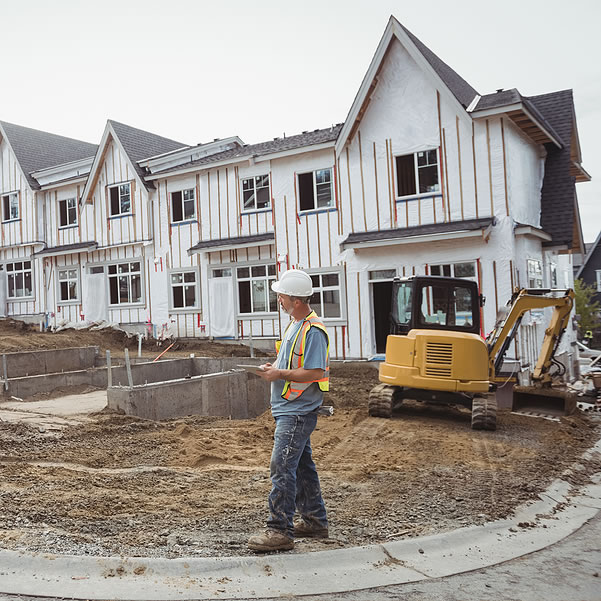
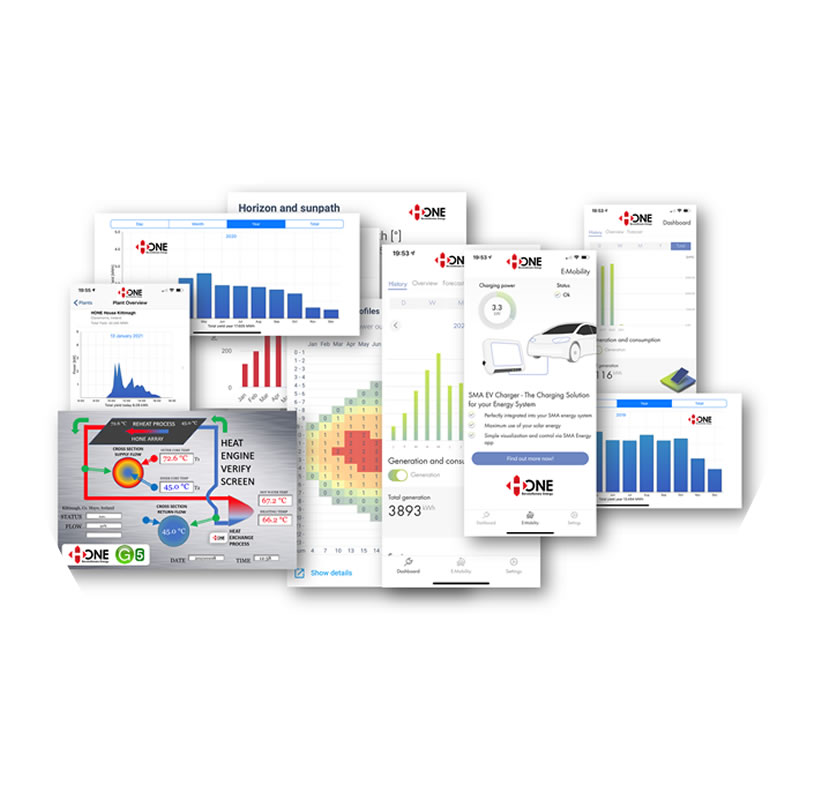
HONE - Online Data
We love data; not everyone can have the best product, and many people claim they do, so the only way past that is real data. Always insist on it.
Every HONE system has data options, and where the systems have different applications such as car charging, etc., they all talk to each other.
HONE Installations
A residential installation with a HONE system is very straightforward; it involves installing HONE Thermal/Electric panels with additional HONE Electric panels. This switches a significant amount of your imported electricity and heating/hot water energy to your own renewable energy systems.
This, of course, collapses your bills versus a heat pump where you have to pay to buy someone else’s brown electricity for both your heating and your power usage.
The picture below shows a 2021 large housing Kingspan/HONE development of A1 Zero Emissions detached homes of 2, 3, 4 beds. Heating bills vary from 75 euros per year to 149 euros per year for the larger detached 4-bed houses.
See the case study section for more information.
A commercial or industrial installation with a HONE system can be a multitude of options.
Typically, these can be large scale renewable heating, cooling, power generation with multitudes of complex applications such as feeding free renewable energy into district or building heating systems, supplying free clean electricity for power consumption, including large scale EV charging.
This can also include large scale cooling plants using high-temperature heat to run chillers. Using HONE Thermal/Electric panels allows you to deploy these plants in locations that don’t even have any local power.
All HONE systems can be deployed in on-grid, off-grid or private grid configurations.
See the case study section for more information.
The following 112-page manual covers all the main elements of installing HONE Thermal & Electric systems.
Commercial & Customised systems will have additional requirements depending on the specific configurations.
Also, you can always ask us questions.
You can download the PDF HERE or read it below.
All HONE systems are typically maintenance-free.
Thermal systems require a fluid service every 5 years. Electrical systems have no maintenance requirement.
All systems have monitoring options to identify issues remotely, but monitoring is primarily about checking the amount of free energy you produce.
If you have any questions, you can contact support by the support form or use the chat function at the bottom right-hand side of any webpage.

Subscribe to Our Newsletter
Subscribe to
Our Newsletter


